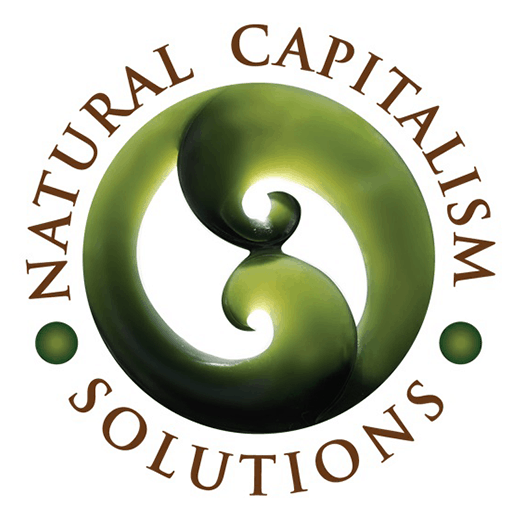| ALSO POSTED BY: Sustainable Brands 26 July 2012 |
Written by Toby Russell (CEO) & Thomas Hendrick 2012 Intern |
Sustainability is more than just a Global Reporting Initiative (GRI) checklist or making a commitment to reduce carbon emissions. It spurs innovation, creates new ways of delivering services, and often comes from ideas by employees at every level of an organization.
Employees are the ones who enable a company to reach its sustainability goals. Do employees turn off computers after work? Do they feel empowered to act on inefficiencies that they encounter? Do they see sustainability as a part of their job? Are they motivated? If the answer is no, then the sustainability policy is nothing more than empty rhetoric.
Companies often start their sustainability engagement by creating a cross-functional ‘green team’ that acts as a catalyst for their programs. This approach can yield phenomenal results but, more often than not, the enthusiasm gained from the initial quick wins dwindles and teams soon lose momentum and suffer from burnout.
How then do you continue to motivate employees around sustainability? Here are a few tips on how to use web 2.0 tactics to bolster your sustainability engagement programs:
Create an environment of trust
Many companies ban social media use (e.g., Facebook and Twitter) at the workplace, worrying that employees will be distracted by photos of weekend vacations or waterskiing squirrel videos. Yet when it comes to engaging employees around a specific initiative, social media has exciting potential to increase engagement and spur innovation.
Social media may be especially useful as it can engage employees around specific goals and create a dynamic forum to share resources, ideas, and drive implementation.
Leveraging an internal facing social network (such as Yammer) enables staff to learn and contribute from any device anywhere. It is vital that the platform be open and transparent. If employees are afraid of repercussions the real conversations that drive innovation will not occur.
Make it engaging, make it fun
In a digital world, the entire model of sustainability engagement has to shift. It is no longer enough to just have brown-bag lunches or a river cleanup at your headquarters and call it your engagement program. Creating dynamic content that is relevant, exciting and accessible is crucial, and using a social network to distribute your content is especially effective.
One way to make sustainability fun is through games. GE combined their social network with a program called Eco-Treasure Hunts to get employees into a friendly competition looking for energy savings. Eco-Treasure Hunts resemble a cross between an energy audit and a scavenger hunt. Each treasure hunt can last between one and three days and involves teams of employees. Each team has to identify and quantify energy-saving opportunities. Every aspect of the company’s operation is fair game including lighting, HVAC systems and manufacturing operations. GE conducted 200 treasure hunts across their business units and found a total of $150 million in energy savings.
Playing games is addictive and hooks people at the level of their basic social drives for achievement, appreciation, reciprocity and friendly competition. Social media has the ability to organize games and give employees flexibility in how they participate. It’s also a nice way to encourage engagement – especially if prizes for winning a game are attractive. Bonus, anyone?
Unleash your employees on the outside world
If the thought of allowing employees to talk openly about your programs internally scares you, the concept of unleashing this level of transparency externally would make the most liberal of communications teams a bit twitchy. Contrary to popular belief, allowing employees to talk about your sustainability program outside the company can be a very effective way to build consumer trust.
Eric Schmitt, the former head of Google once said, “If you are doing something you don’t want people to know, maybe you shouldn’t be doing it in the first place.” It’s advice Andy Woods, innovative C.E.O. ofAdnams Brewery in England, followed when he encouraged all of his employees to tweet, blog, and otherwise engage in social media. His commitment to transparency is part of what enabled Adnams to be named the number one brewery in the U.K. in 2011. Adnams’ goal is to create a future economic model for the east of England that is based on a low-carbon economy.
An external social media initiative can effectively convey a message to a much broader audience than a regular marketing campaign. Earlier this year Levi Strauss started a program to save water by asking their employees to wear the same pair of jeans for five days in a row without washing them. To document their stylish journey, employees took photos of their outfits and posted them to Instragram. On day five, Levis had more than 1,800 photos uploaded and 3,500 photos on their Flickr stream with about 10,000 views. The water-less challenge both engaged employees and helped spread the word to customers about the importance of conserving water.
Social media is not without risk. It requires some careful implementation and cannot be built on a whim. Done well, it offers potential to give employees an opportunity to have an impact that’s not only good for the environment but also good for internal moral and your organization’s bottom line.
Thomas Hendrick has a master’s degree in environmental management and consultancy from Lancaster University in the United Kingdom and a Bachelor’s degree in Journalism from the University of Colorado. He has been writing about sustainability issues for about two years now and currently works with Natural Capitalism Solutions.

Leave a Reply